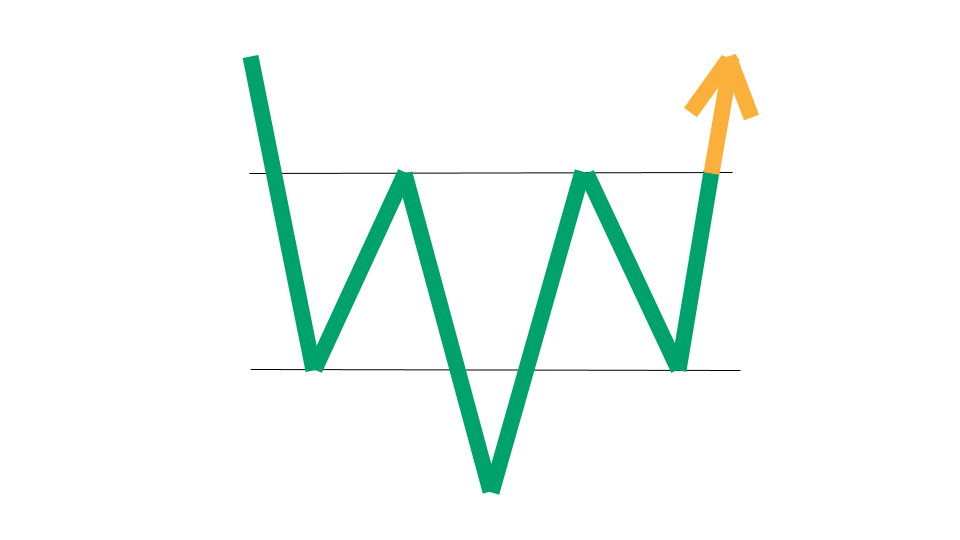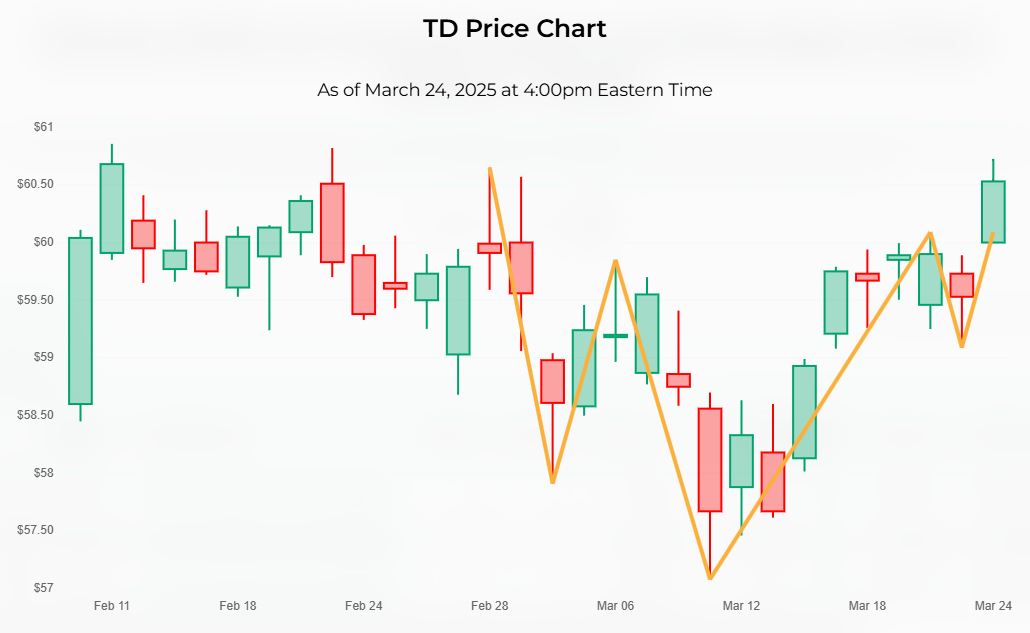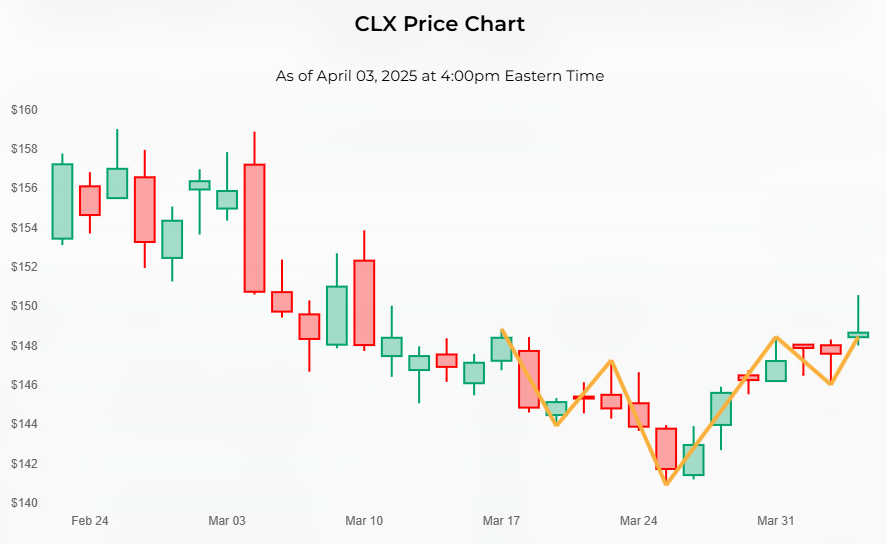Inverse Head and Shoulders Chart Pattern - How It Works and How Traders Can Use It
Stock Market Guides is not a financial advisor. Our content is strictly educational and should not be considered financial advice.
When it comes to the stock market, sometimes you might hear the term "inverse head and shoulders" mentioned. It refers to a stock chart pattern that is popular among active stock traders.
This article will explain what a inverse head and shoulders chart pattern is and how traders might be able to benefit from using it.
What Exactly Is an Inverse Head and Shoulders?
An inverse head and shoulders pattern is characterized by a stock chart having three consecutive troughs, where the middle trough (the second one) has a lower price than the other two troughs on either side of it.
In between the troughs are two price peaks. One of the price peaks is between the first and second troughs, and the other price peak is between the second and third troughs.
When you look at it on a stock chart, an inverse head and shoulders looks a bit like a drawing of a head and two shoulders, except upside down. The head is the lowest price trough in the middle, while the shoulders are the first and third troughs, respectively.
Some people might refer to this pattern as an inverted head and shoulders. Both terms mean the same thing and are referring to the same chart pattern.

That image is a graphical icon that gives an idea visually of what an inverse head and shoulders chart pattern looks like.
Stock Market Guides

Stock Market Guides identifies swing trading opportunities that have a historical track record of profitability in backtests.
Average Annualized Return
79.4%
What Does an Inverse Head and Shoulders Look Like On A Stock Chart?
The image below is an example of an inverse head and shoulders pattern as shown on one of our stock charts.
There are golden lines on our charts that automatically outline chart patterns when they're detected.
You can see how there are three distinct price troughs, and the middle one is the lowest. There are also two price peaks between the troughs.
How Do Traders Use an Inverse Head and Shoulders?
The logic behind this pattern is that the lowest trough (the head) marks a support level that might protect against a further decline in price. The existence of the third trough reinforces this notion.
Many traders therefore consider an inverse head and shoulders pattern as a signal to buy. The idea is since new higher support levels are taking shape, it's a sign of strength and the price might not be likely to go below those levels moving forward.
A trader might wait for the price to rebound past the price peak level between the three troughs before buying the stock. That would be like a breakout trade. The idea here is that the trader is waiting for confirmation that the price rebound will surpass the potential resistance level of the two price peaks.
Alternatively, a trader might consider buying the stock after the stock has formed the third trough of the pattern in anticipation of an ongoing price rebound.
Is an Inverse Head and Shoulders Bullish or Bearish?
Inverse head and shoulders patterns are generally considered bullish chart patterns, meaning that the presence of an inverse head and shoulders on a stock chart might be an indication that the stock price is on the verge of going up.
Since an inverse head and shoulders is typically considered bullish, it means traders might try to capitalize by going long (meaning that they would be buying instead of shorting).
How Do You Find Stocks That Have Inverse Head and Shoulders Patterns?
You can find them by using our Inverse Head and Shoulders scanner. It's a free tool we offer here at Stock Market Guides. It uses our proprietary scanning technology to find stocks that are in an inverse head and shoulders chart pattern.
Here's how the scanner results look:
That tool ensures that you don't have to waste time flipping through stock charts manually to find stocks with an inverse head and shoulders pattern.
Video About Inverse Head and Shoulders
Here's a video that explains the inverse head and shoulders chart pattern and gives examples:
Example of an Inverse Head and Shoulders Trading Strategy
For this example of an inverse head and shoulders trading strategy, we're going to use a daily chart, where each price bar represents one day of price activity. That means it would be a swing trading strategy where the trade is designed to last more than one day but not for the long haul.
Entry for the Inverse Head and Shoulders Trading Strategy
The entry for this Inverse Head and Shoulders trading strategy will be as follows:
The entry criterion for our Inverse Head and Shoulders trading strategy is very simple. You can see in the stock chart below for Clorox that the entry price would be right around $148.
Exit for the Inverse Head and Shoulders Trading Strategy
There are a lot of possibilities here for the exit.
One benefit of using a stock chart pattern as a basis for making trades is that the pattern itself can help you determine exits in some cases.
For any given trading strategy, it can be helpful to define three different criteria for the exit: profit target, stop loss, and time limit.
Not everyone uses all three, and that's totally fine. Ultimately, you can set these values however you want. But for the purposes of this strategy example, we will define all three:
- Profit Target
We will set the profit target at 1.5 ATRs away from the entry price.
ATR is an indicator in the stock market that measures a stock's recent price volatility. Most trading platforms have it available as an indicator you can enable.
Our profit target criterion indicates that we will take the ATR value of the stock, multiply it by 1.5, and add it to the price we paid when we bought the stock. That will be our profit target and we can set up a sell limit order at that price.
- Stop Loss
We will set the stop loss at 0.5 ATRs below the second trough's low price (the lowest price of the troughs of the inverse head and shoulders). This means we take the ATR value of the stock, multiply it by 0.5, and subtract it from the second trough's low price.
That will be our stop loss and we can set up a stop order at that price.
- Time Limit
We will set the time limit as one week since this is a swing trade. If the stock has not hit either the profit target or stop loss by the time limit, then we will close the trade manually at the opening bell seven calendar days after entry.
How Well Do Inverse Head and Shoulders Patterns Actually Work?
The idea of an inverse head and shoulders trading strategy sounds nice to many people because it offers a clear, easy-to-understand way to find and manage a trade setup.
But does it actually work? Can traders indeed generate profits by trading inverse head and shoulders chart patterns?
That's exactly what our company can help answer for you, since our scanner technology has allowed us to do our own research on that precise question.
The answer is that trades based on an inverse head and shoulders are not always profitable, but for certain stocks they might indeed have a track record of success according to our backtest research.
Here is some data that shows how a proprietary inverse head and shoulders trading strategy we created has performed historically according to backtests:
Wins
---
Losses
---
Win Percentage
---
Annualized Return
---
Anyone who signs up for our swing trading scanner service will be able to see stocks that qualify for that trading strategy in real time.
Learning More About Inverse Head and Shoulders
You can contact us any time if you would like to ask any questions about inverse head and shoulders or anything else related to the stock market.
Join Our Free Email List
Get emails from us about ways to potentially make money in the stock market.


